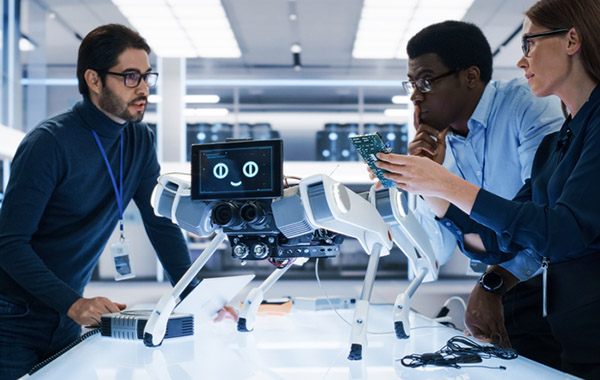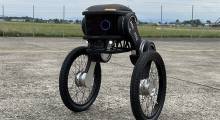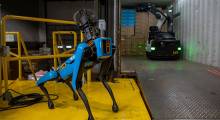The F45 Robotics, Automation, and Autonomous Systems Committee this week proposed a method for testing the stability of legged robots.
“Our goal is to develop detailed testing methods and measurements that can accurately evaluate the locomotion stability of a legged robot (i.e., walking without falling-over),” wrote ASTM member Bowen Weng, in a statement. “The primary objective is to ensure the robot's performance is safe and compatible enough to interact with humans in commercial and industrial environments.”
Founded in 1898, ASTM International, formerly the American Society for Testing and Materials, said it collaboratively develops standards to improve the performance in manufacturing and materials, products and processes, and systems and services. The organization has 30,000 members from more than 150 countries.
ASTM forms subcommittee on legged robots
Earlier this month, ASTM International launched a new subcommittee, F45.06, on legged robotics. The subcommittee is developing standards and testing procedures to evaluate the performance of mobile robots including but not limited to quadruped robots, bipedal robots, and humanoids that operate semi-autonomously or in fully automated modes.
“The ability to maintain balance has been the key challenge and primary interest for legged robot researchers for decades since the invention of these robots,” said Weng, who is chair of the subcommittee. “As a result, the standard to evaluate the balancing capabilities, to understand if it falls over under varying conditions, against different disturbances, will be a reasonable starting point for the subcommittee’s work.”
The F45 subcommittee will develop standards to provide community-wide, agreed-upon references, added Weng, a technical specialist at Transportation Research Center Inc. in East Liberty, Ohio.
“These standards will help to mitigate risks, identify hazards, save costs, improve efficiency, and ensure consistency and quality,” he said. “These standards will help users and customers to know what a robot can and cannot do and will help build consumer confidence in legged robots.”
Proposed standard to help robots be useful
The proposed standard, WK86916, should be useful for researchers, designers, manufacturers, regulatory bodies, and customers, noted Weng.
“With the proposal as a start point, they can work together to form a community-wide consensus on the appropriate capability of legged robots in terms of disturbance rejection,” he said.
Weng added that improving automation through legged robots supports “Goal 9: Industry, Innovation, and Infrastructure” of the United Nations' Sustainable Development Goals by facilitating healthcare and education.
ASTM International said it welcomes interested parties, including indusry, academia, or third-party agencies, to join in the development of the legged robot standard. The subcommittee is particularly interested in participants who can help validate proposals and methods using their own experience with robotics.
“The goal is to have as many voices contributing to this work as possible,” said the organization. Anyone interested in joining ASTM and the new subcommittee can visit this page: https://www.astm.org/get-involved/technical-committees/committee-f45
Article topics
Email Sign Up

















